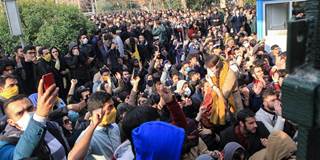OnPoint Subscriber Exclusive
The Big Picture brings together a range of PS commentaries to give readers a comprehensive understanding of topics in the news – and the deeper issues driving the news. The Big Question features concise contributor analysis and predictions on timely topics.

In Context: The Protests in Iran
In the largest mass demonstrations since 2009, Iranians have taken to the streets to protest corruption and a lack of economic opportunity. With a reformist president and the lifting of economic sanctions under the 2015 Iran nuclear deal, why haven’t conditions for ordinary people improved?